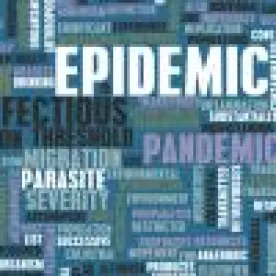On Jan. 31, 2020, Alex Azar – the secretary of the Department of Health and Human Services (HHS) – declared a public health emergency due to the continued spread of coronavirus. The declaration took effect Sunday, Feb. 2 at 5:00 p.m. EST, and came one day after the World Health Organization (WHO) declared a global health emergency. As of the date of the emergency declaration, nearly 10,000 people have been diagnosed with the virus, and more than 200 have died. All fatalities to date have occurred in China.
Coronaviruses are a family of respiratory viruses that typically present symptoms similar to the cold. The current form of the virus (designated as 2019-nCoV) is considered a novel coronavirus, and was first reported in Wuhan, China on Dec. 31, 2019. It is believed this virus initially spread from animals to humans, as many of the patients in the initial outbreak were linked back to a large seafood and animal market in Wuhan. However, it was quickly determined after the initial outbreak that the virus also spreads through person-to-person transmission.
Secretary Azar declared the state of emergency under section 319 of the Public Health Service (PHS) Act, which gives the secretary the power to determine that (1) a disease or disorder presents a public health emergency; or (2) a public health emergency, including significant outbreaks of infectious disease or bioterrorist attacks, otherwise exists.
The emergency declaration can last for the duration of the emergency, or 90 days, but the secretary has discretion to extend as necessary. With the emergency declaration, the United States has also issued a “Level 4” travel advisory for China, which is the highest level available. As a result of the advisory, American, Delta, and United airlines will halt all flights to mainland China, and as of Sunday, Feb. 2, the United States will funnel all flights from China to the U.S. through seven airports. The United States can also now deny entry to foreign nationals who visited China in the last 14 days, and U.S. citizens returning from China’s Hubei province within 14 days must undergo mandatory quarantine. U.S. citizens returning from other parts of China will undergo enhanced screening upon return, and a self-quarantine of up to 14 days.
If needed, the declaration also gives the federal government access to emergency funds to combat and contain the virus, and waive or modify certain requirements under the federal health care programs. States are also given access to additional funds and resources, and can take emergency measures to reduce barriers to treatment.
Under the emergency declaration, the secretary may also:
-
Access “no-year” funds appropriated to the Public Health Emergency Fund to respond to the emergency. The Fund may be used for a variety of needs, including facilitating coordination among federal, state, tribal and territorial entities and public and private health care entities impacted by the emergency; accelerating advanced research and development of medical countermeasures; and supporting initial emergency operations.
-
Enable the secretary of defense to deploy military trauma care providers to high-acuity trauma centers.
-
Limit the liability of health care professionals who are members of the Medical Reserve Corp or professionals included in the Emergency System for Advance Registration of Volunteer Health Professionals responding to a public health emergency in the initial 90 days.
-
Modify the practice of telemedicine.
-
Allow state and local governments to access the General Services Administration (GSA) Federal supply schedule when using federal grant funds.
As this is a rapidly evolving public health situation, hospitals, providers, insurers, and other impacted stakeholders should monitor closely and be prepared to respond if the virus continues to spread.




 />i
/>i
